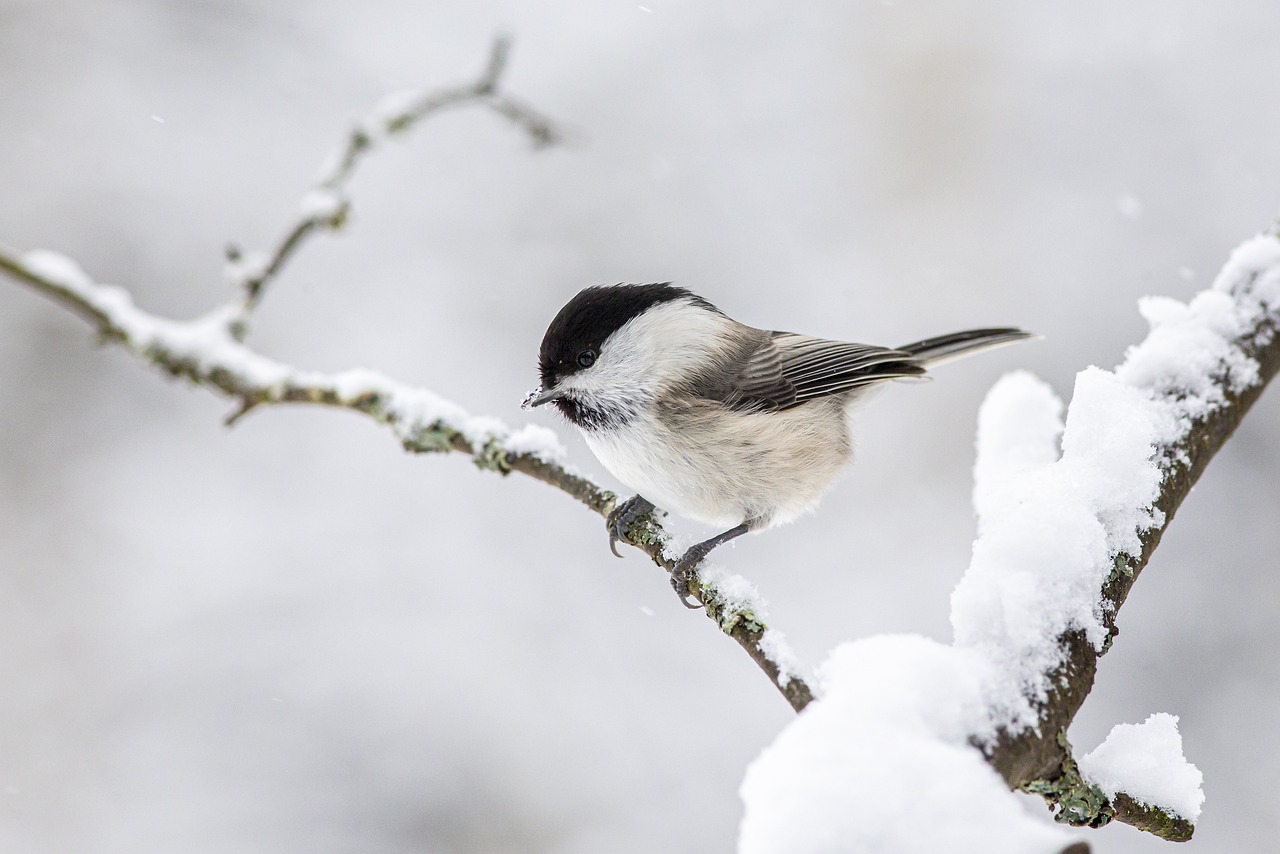Here’s a full natural history and scientific overview of the Willow Tit (Poecile montanus) — a quiet but resilient little songbird of northern woodlands, known for its soft calls and adaptability to cold climates.
🐦 Willow Tit (Poecile montanus)
Taxonomy
- Kingdom: Animalia
- Phylum: Chordata
- Class: Aves
- Order: Passeriformes
- Family: Paridae (Tits and Chickadees)
- Genus: Poecile
- Species: P. montanus
Common Names
- Willow Tit
- Northern Marsh Tit (formerly confused with Poecile palustris)
- In some regions, called simply “Grey Tit” or “Moss Tit.”
General Description
The Willow Tit is a small, round-bodied songbird with a large head, short neck, and soft, fluffy plumage — perfectly adapted for cold northern forests. Although it looks very similar to the Marsh Tit, subtle differences in voice and habitat separate the two.
- Length: 11–13 cm
- Wingspan: 17–19 cm
- Weight: 9–12 g
- Plumage:
- Crown and nape: Glossy black.
- Cheeks: Clean white.
- Back: Greyish-brown.
- Underparts: Pale buff or greyish-white.
- Wing: No pale wing panel (unlike some related species).
- Bill: Short and dark; pale cutting edges often visible.
- Tail is relatively long and slightly notched.
- Sexes are alike in appearance; juveniles are duller and browner.
Distribution
The Willow Tit has a wide Palearctic distribution, extending across Europe and northern Asia, including:
- Europe: From the British Isles and Scandinavia south to France, the Alps, and northern Spain.
- Asia: Across Russia, Siberia, northern China, and Japan.
- In Estonia and Northern Europe: Common and widespread, especially in mixed and coniferous forests.
Habitat
- Favors moist, mixed, or coniferous woodlands, often near wetlands or streams.
- In northern regions, common in spruce, pine, birch, and alder forests.
- Also occurs in bog margins, willow thickets, and old forest clearings.
- Unlike the Marsh Tit, it tolerates colder, wetter habitats and often occurs in younger, regenerating woodland.
Behavior
- Resident year-round, does not migrate.
- Forms small family or winter flocks, sometimes joining mixed-species groups with other tits, goldcrests, and treecreepers.
- Known for its boldness and curiosity, yet quieter and more secretive than other tits.
- Often seen hanging upside down while feeding among branches.
- Cavity nester — excavates its own hole in rotten wood, unlike most tits that use existing holes.
Diet
- Omnivorous:
- Insects, spiders, and other small invertebrates in summer.
- Seeds, berries, and tree buds in winter.
- Food caching:
- Stores seeds and insects in bark crevices and moss during autumn for later use.
- Excellent spatial memory helps it relocate caches even months later.
Voice and Song
- Distinctive nasal, buzzing call: “zee-zuh, zee-zuh” or “chay-chay”
- The song is a soft, slow, descending whistle: “tsee-tsee-tsee-tyoo”
- Calls are a key feature distinguishing it from the Marsh Tit, whose call is sharper (“pitchou”).
Breeding
- Season: April to June.
- Nest: Built in rotten tree stumps, willows, or birches — the pair excavates the cavity themselves.
- Nest materials: Moss, plant fibers, and hair.
- Clutch size: 6–10 eggs.
- Eggs: White with fine reddish spots.
- Incubation: 13–15 days (female only).
- Fledging: 17–19 days after hatching.
- Both parents feed the chicks.
Conservation Status
- IUCN Red List: 🟧 Near Threatened (Europe)
- Global status:Least Concern, but declining in parts of Western Europe due to:
- Loss of deadwood in managed forests.
- Habitat fragmentation.
- Reduction in suitable rotting trees for nesting.
- Populations remain stable in Scandinavia and the Baltic region, where natural forests persist.
Identification Tips: Willow Tit vs. Marsh Tit
| Feature | Willow Tit (P. montanus) | Marsh Tit (P. palustris) |
|---|---|---|
| Voice | Harsh “zee-zuh” | Sharp “pitchou” |
| Cap | Matte black | Glossy black |
| Cheeks | White, meeting the neck | Often darker at the back edge |
| Habitat | Damp woodland, birch, alder | Drier, mature deciduous woodland |
| Behavior | Digs own nest cavity | Uses existing holes |
Ecological Role
- Important insect predator in northern forests.
- Aids in seed dispersal and forest regeneration.
- Its nest cavities are later used by other small birds and invertebrates.
Interesting Facts
- One of the few European songbirds capable of excavating its own nest hole.
- Despite harsh winters, it remains active year-round, surviving temperatures below −30 °C.
- Can remember hundreds of food cache locations for months.
- Each bird has slightly unique calls, which may help identify individuals within a flock.
In Estonia and Northern Europe
- Common resident throughout Estonia, Finland, Sweden, and Norway.
- Often found in spruce-birch forests, wet woodland edges, and peatland margins.
- Calls are easily heard during late winter and early spring when pairs begin to establish territories.
Visited 10 times, 1 visit(s) today
Views: 195
Subscribe to the newsletter:
